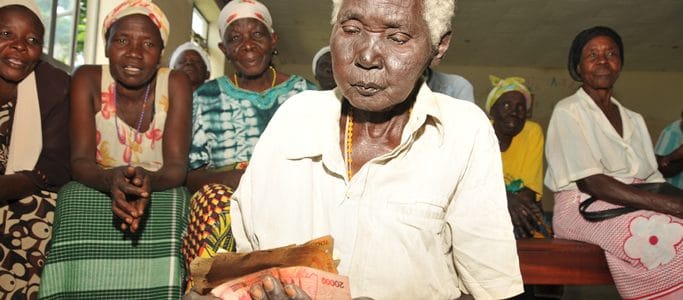
Several quantitative studies provide rigorous evidence on the positive economic impacts of different social cash transfer models in sub-Saharan Africa (Bastagli et al 2016; Filipski et al., 2015; Thome et al., 2013; Taylor et al., 2016). In particular, it has been found that social cash transfers generate economic multiplier effects at the local community level (Thome et al., 2013). They increase the purchasing power of recipients and thus the demand for goods and services. This boosts the productivity of local communities.
However, given the large differences in local settings in low-income countries, the question emerged to what extent structural circumstances and settings determine the extent of local economy effects. Structural circumstances refer to access to services and socio-economic opportunities that shape the way people generate their livelihoods. For example, this includes access to transport, communication services, credit facilities, wage labour, agricultural production and off-farm trade. These structural circumstances may increase or decrease the economic effects of social pensions.
Two new studies – titled The economic impacts of a social pension on recipient households with unequal access to markets in Uganda by Kuss, Llewellin & Gassmann (2018) and The relevance of local structures for economic multiplier effects of social pensions in Uganda by Kuss, Gassmann & Mugumya (2018)- focus exactly on this question. By examining the case of Uganda’s Senior Citizen Grant (SCG), the studies analyse the different transmission channels from the SCG to economic growth in remote and integrated areas.
How can social pensions contribute to economic growth?
Social pensions can contribute to economic growth through three interlinked channels: direct impacts on recipients, secondary impacts on non-recipients, and tertiary impacts on the wider community. The direct impact of the SCG is positive: the cash increases the purchasing power of recipients. The increased demand of recipients for goods and services is in the benefit of local business owners. This is likely to result in an expansion of businesses and services in the communities, which eventually benefits the wider community. For example, recipients may spend a part of their social pension on transport services. This increases the business opportunities for transport providers and may attract more transport providers to offer their services – a benefit for all community members.
What are the differences in remote and integrated areas?
The findings of the two new studies show that Uganda’s SCG is beneficial to both integrated and remote regions. However, they also find substantial differences in terms of impacts between these areas: overall, recipients and non-recipients living in integrated and well-connected areas have better opportunities to directly benefit from the SCG and the cash inflow to their communities than people living in remote and isolated areas.
In terms of direct impacts on beneficiaries, the SCG improves the livelihood activities of recipients and their households in both integrated and remote areas, though to a different extent. The opportunities to access infrastructure and services are better in integrated areas. For example in terms of transport, recipients from both integrated and remote increased the use of transport services. However, these services were more expensive for recipients in the remote areas because of longer distances.
With respect to secondary impacts for non-recipients, the studies found that non-recipients in integrated areas were in a better position to profit from the SCG compared to non-recipients in remote areas. This was particularly the case for higher value businesses which remote non-recipients were less likely to engage in. For example, the providers of mobile phone services in integrated areas benefitted from the increased demand for their services by recipients. In remote areas by contrast, the limited mobile phone network coverage limited such rise in demand and consequently the secondary benefits for mobile phone service providers.
When looking at the tertiary impact of the SCG on the local community, the studies indicate that the SCG has improved existing infrastructure and services in both integrated and remote areas. However, the studies also showed that in cases where structures or services were absent, the SCG would not lead to their introduction. Consequently, this contributed to a widening gap between integrated and remote areas, as existing infrastructure in integrated areas was further strengthened while it remained absent in remote areas. For example, while mobile phone services remained largely absent in remote areas due to the lack of mobile phone network coverage, these services improved in integrated areas.
What does this mean for policy-makers and further research on social protection in Uganda?
The studies confirm the positive impact of social pensions on factors contributing to economic growth. More importantly however, they also show that this process unfolds unequally in remote and integrated areas. This is because limited structural circumstances in remote areas make it much harder to tap into the productive potential of the SCG. These are vital insights for policy-making and for future research. It suggests to policy makers that complementary interventions are necessary in order to reduce the inequalities between remote and integrated areas in Uganda. It also emphasises the importance of adopting a context-specific lens when evaluating the outcomes of social cash transfer programmes – and go beyond common aggregate level impact assessments.








